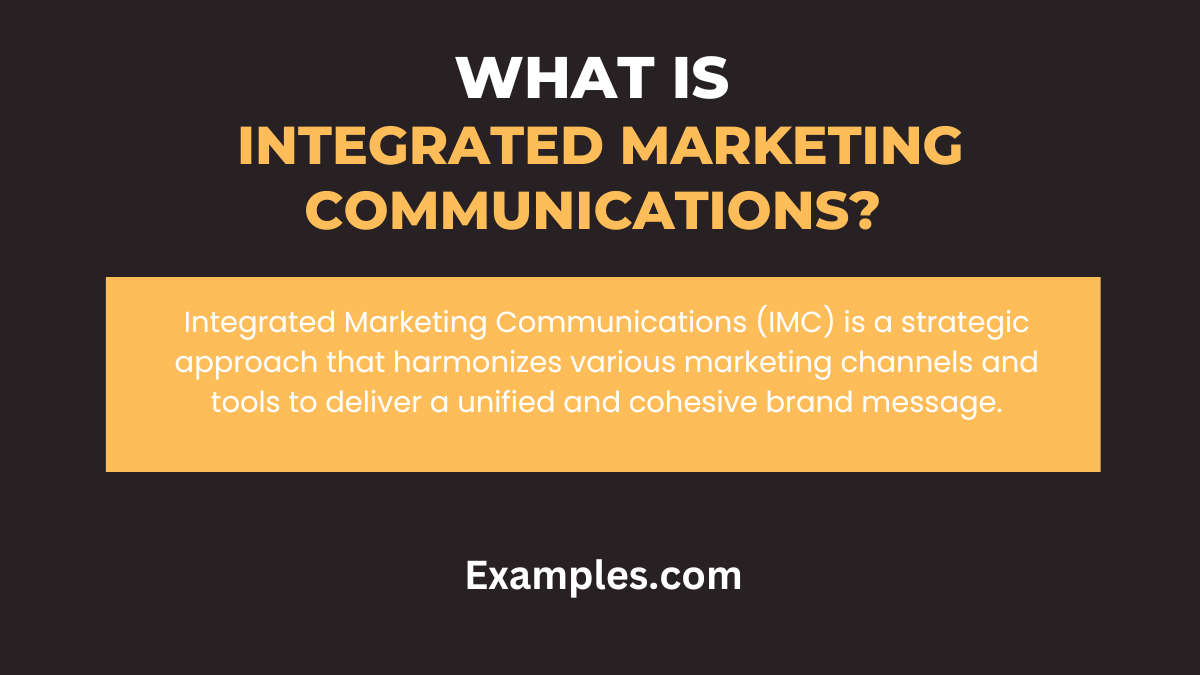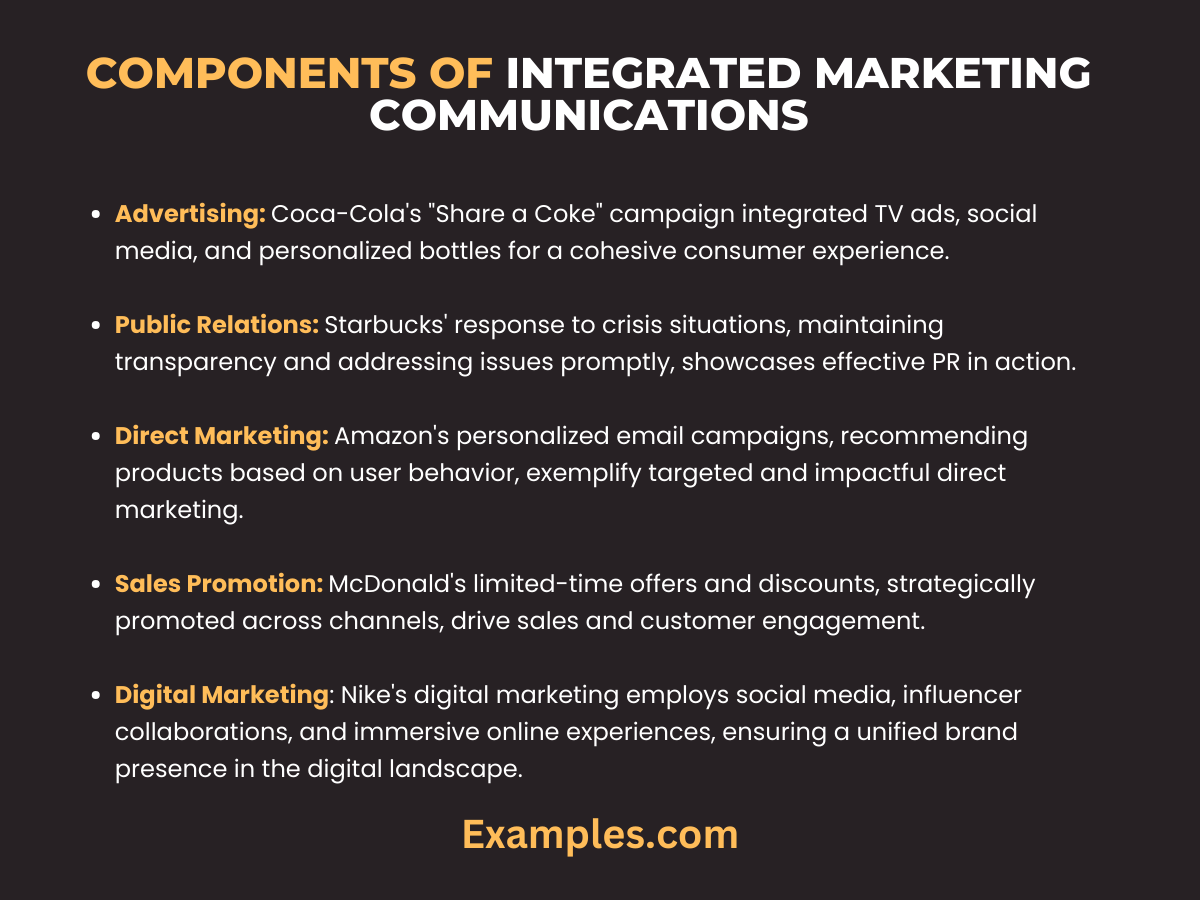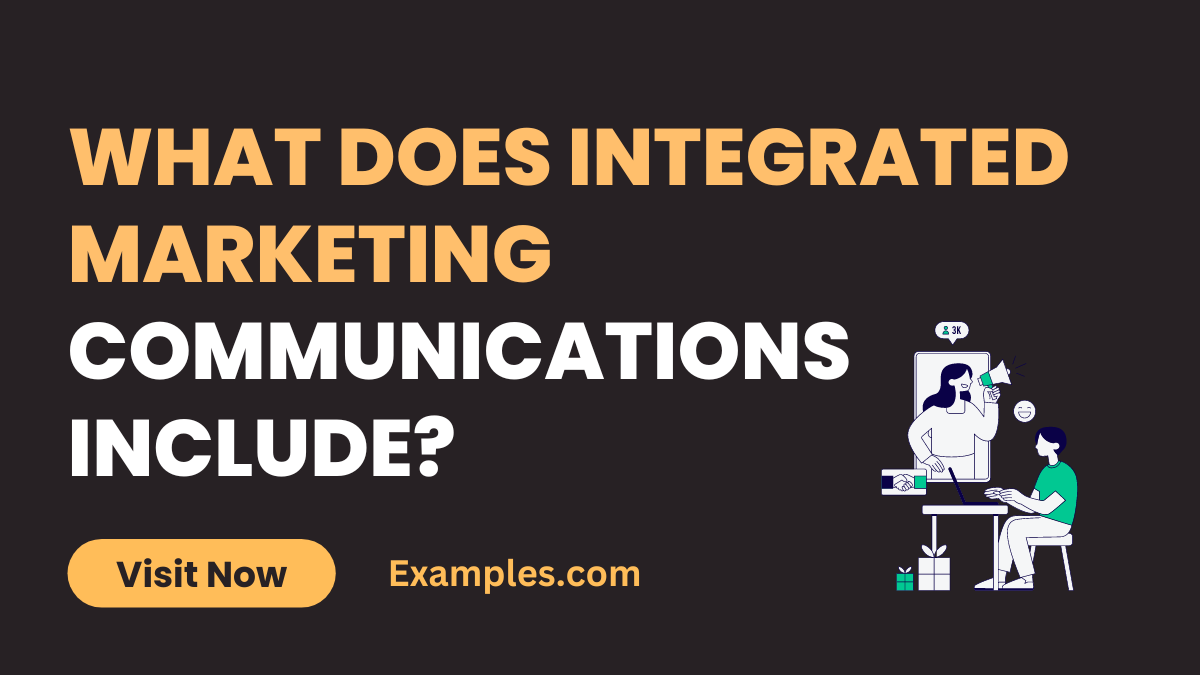What does Integrated Marketing Communications Include?
Integrated Marketing Communications (IMC), a dynamic approach reshaping marketing landscapes. Delve into the definition, tracing its roots through enlightening examples and understanding its rich origin and history. Uncover how to wield IMC strategies effectively, and grasp invaluable tips to navigate this powerful marketing methodology. This guide illuminates IMC’s versatility, equipping you with the expertise to harness its potential in crafting impactful and cohesive brand narratives.
What Is Integrated Marketing Communications?

Integrated Marketing Communications (IMC) is a strategic approach that harmonizes various marketing channels and tools to deliver a unified and cohesive brand message. It involves coordinating and integrating all communication elements, both online and offline, to ensure consistency and maximize the impact of marketing efforts across diverse channels. IMC seeks to create a seamless brand experience for the target audience, fostering stronger connections and enhancing overall marketing
Components Of Integrated Marketing Communications

Integrated Marketing Communications (IMC) comprises several key components to create a holistic promotional strategy. These components include Advertising, Public Relations, Direct Marketing, Sales Promotion, Personal Selling, and Digital Marketing. Each component plays a unique role in conveying a consistent brand message. For instance, advertising utilizes paid media for widespread reach, while public relations focuses on managing brand reputation. To improve IMC, ensure seamless coordination among these components, aligning messages, and leveraging analytics for data-driven insights.
- Advertising: Coca-Cola’s “Share a Coke” campaign integrated TV ads, social media, and personalized bottles for a cohesive consumer experience.
- Public Relations: Starbucks’ response to crisis situations, maintaining transparency and addressing issues promptly, showcases effective PR in action.
- Direct Marketing: Amazon’s personalized email campaigns, recommending products based on user behavior, exemplify targeted and impactful direct marketing.
- Sales Promotion: McDonald’s limited-time offers and discounts, strategically promoted across channels, drive sales and customer engagement.
- Digital Marketing: Nike’s digital marketing employs social media, influencer collaborations, and immersive online experiences, ensuring a unified brand presence in the digital landscape.
Integrated Communications In Advertisement
Integrating communication in advertising entails synchronizing messages across various ad platforms and channels to ensure a consistent brand image. It combines digital, print, social, and other media to deliver a unified message. For instance, a brand promoting a campaign through TV ads, online banners, and social media posts presents a cohesive narrative. To enhance this, analyze consumer touchpoints and align messaging across platforms for a seamless brand experience.
- Nike’s “Dream Crazy” Campaign: Nike’s “Dream Crazy” campaign, featuring Colin Kaepernick, seamlessly integrated TV commercials, social media promotions, and live events. The consistent message of empowerment resonated across platforms, reinforcing the brand’s values.
- Starbucks’ Holistic Brand Experience: Starbucks excels in integrated business communications by ensuring a consistent brand experience across physical stores, online platforms, and employee interactions. This holistic approach contributes to the brand’s success.
- Google’s “Garage Digital” Initiative: Google’s “Garage Digital” integrates online courses, live webinars, and in-person events to provide a comprehensive learning experience. This approach ensures a seamless and accessible skills development platform.
What Are The 4 C’s Of Marketing Communication?
Marketing communication has evolved beyond the traditional 4 P’s, incorporating the 4 C’s to address the contemporary consumer landscape. Dive into the comprehensive guide to grasp the significance and application of the 4 C’s in modern marketing strategies.
**1. Customer Value Proposition (CVP): Explore the concept of Customer Value Proposition (CVP) as a pivotal element of marketing communication. Learn how to craft compelling value propositions that resonate with target audiences, fostering brand loyalty and satisfaction.
**2. Cost to the Customer: Delve into the crucial aspect of Cost to the Customer, a paradigm shift from the traditional focus on pricing. Uncover strategies to communicate cost-effectiveness, transparency, and overall value, ensuring a competitive edge in the market.
**3. Convenience: Examine the significance of Convenience in marketing communication, emphasizing the role of accessibility and ease in consumer interactions. Discover how businesses optimize convenience to enhance customer experiences and drive engagement.
**4. Communication: Explore the dynamic realm of Communication and its multifaceted role in modern marketing. From the power of storytelling to leveraging diverse channels, grasp effective communication strategies that resonate with diverse audiences.
What Are The Elements of Integrated Marketing Communication?
Integrated Marketing Communication (IMC) comprises several components that synergize to deliver a unified and effective marketing strategy. These elements collectively contribute to a cohesive brand message across various channels.
- Consistency in Messaging: Ensure uniformity in brand messaging across all platforms and channels. Consistent tones, themes, and narratives help reinforce brand identity.
- Multi-channel Approach: Utilize various channels—digital, traditional, social media, and more—to reach diverse audiences. Each channel complements others to amplify the brand message.
- Customer-Centric Focus: Tailor communications to resonate with target audiences. Understand their preferences, behaviors, and needs to deliver personalized messages.
- Strategic Integration: Integrate various marketing tools, such as advertising, public relations, sales promotions, and direct marketing, to work cohesively towards common goals.
- Brand Synchronization: Ensure every aspect of marketing—advertising, promotions, packaging, etc.—reflects the brand identity and goals.
- Data-Driven Insights: Leverage data analytics to make informed decisions and fine-tune strategies. Analyze consumer behavior to create more targeted and impactful communications.
- Cross-functional Collaboration: Encourage collaboration between marketing, sales, PR, and other departments to maintain consistency and alignment in messaging and objectives.
- Evaluation and Feedback: Continuously monitor and assess the effectiveness of integrated campaigns. Gather feedback to refine future strategies and improve communication tactics.
- Flexibility and Adaptability: Remain agile to adapt to changing market trends, consumer preferences, and emerging technologies while staying true to the brand’s core identity.
- Innovation and Creativity: Embrace innovative approaches and creative thinking to stand out in a competitive landscape and capture audience attention.
In conclusion, Integrated Marketing Communications (IMC) weaves together various elements, forming a harmonized strategy to convey a consistent brand message. By synergizing diverse channels, maintaining brand synchronization, and employing customer-centric approaches, IMC enhances engagement and impact. The strategic integration of marketing tools, data-driven insights, and cross-functional collaboration ensures a dynamic and responsive communication framework, fostering lasting connections with the audience.



